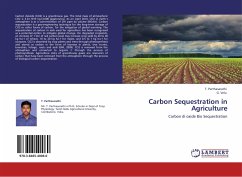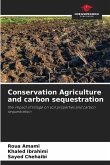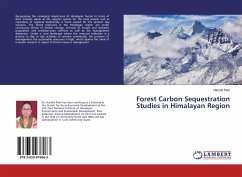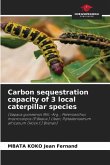Carbon dioxide (CO2) is a greenhouse gas. The total mass of atmospheric CO2 is 3.0×1015 kg (3,000 gigatonnes). As on April 2010, CO2 in earth¿s atmosphere is at a concentration of 391 ppm by volume (NOAA). Carbon sequestration is a geo-engineering technique for the long-term storage of CO2 or other forms of carbon, for the mitigation of global warming. The sequestration of carbon in soils used for agriculture has been recognized as a potential option to mitigate global change. On degraded croplands, an increase of 1 ton of soil carbon pool may increase crop yield by 20 to 40 kg ha-1 of wheat, 10 to 20 kg ha-1 for maize, and 0.5 to 1 kg ha-1 for cowpeas. CO2 is absorbed by crop plants and trees through photosynthesis and stored as carbon in the form of biomass in plants, tree trunks, branches, foliage, roots and soils (EPA, 2009). CO2 is removed from the atmosphere and converted to organic C through the process of photosynthesis. Agriculture sinks of greenhouse gases are reservoirs of carbon that have been removed from the atmosphere through the process of biological carbon sequestration.
Hinweis: Dieser Artikel kann nur an eine deutsche Lieferadresse ausgeliefert werden.
Hinweis: Dieser Artikel kann nur an eine deutsche Lieferadresse ausgeliefert werden.








